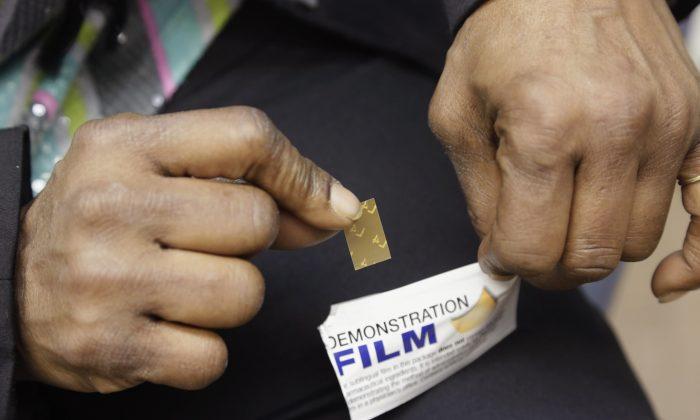Gemma had made all the right moves. She was 27 and already working as an account executive at a major advertising firm.
One day as she stood up she was seized with lower back pain. After a brief exam her primary care physician wrote her a prescription for Vicodin. Gemma found they energized her for work and her stress seemed to melt away. She kept taking them and after a while noticed it took more and more pills to stave off the anxiety, sweating, and body pain that descended whenever she missed a dose. Her physician refilled the increasingly important medication without batting an eyelash at the diminishing intervals of her visits.
Then came a time she was unable to reach her doctor for a refill and was handed OxyContin by a “friend.” Before Gemma knew it she had a 180 mg/day habit coming to a tab of almost $200/day. She knew she was in over her head but terrified at the thought of losing her job if she sought help at a detox center. Then Gemma came across Suboxone while trolling the Internet for a way out. She dialed the hotline and set up a consultation at my office.
“I looked like hell and just couldn’t go on. I was ashamed to tell my friends. My mom, coworkers, even the guy I was dating had no idea,” she said. “I’d worked so hard for everything I had. It was all slipping through my fingers so I made the call.
Painkiller Blocker
Suboxone is the brand name for a combination of an opioid called buprenorphine and another drug called naloxone. Naloxone blocks opioid receptors in the brain and ensures that patients cannot get high from painkillers or heroin while taking Suboxone. Naloxone is the same drug given to revive someone from a heroin or painkiller overdose.
Doctors prescribe Suboxone, which comes as Listerine-like films that are dissolved in the mouth, to patients who are addicted to opioid drugs including Vicodin, OxyContin, Opana, and heroin. Suboxone relieves their withdrawal symptoms and can be slowly tapered, eventually leaving them drug free.
Growing Popularity
In 1996, OxyContin was released and abuse of this crushable, snortable, and injectable, long acting painkiller spread across the country like wildfire. It was quickly dubbed “hillbilly heroin” and ignited an increase in prescription opioid abuse and deaths from overdose, the likes of which had never been seen in this country. From 1997 to 2010, the total number of opioids prescribed per person in America, increased more than 700 percent.
Due to this unprecedented surge in addiction, more physicians have been forced to learn how to prescribe Suboxone. It has taken time for both patients and physicians to warm up to Suboxone since it was put on the market in 2002. However, sales reached $1.3 billion dollars in 2011 and are growing at 10 percent per year. Although only a brief Internet physician licensure course is required to be able to prescribe this drug, a background in addiction and treatment experience are fundamental to prescribing it skillfully and in a way that best meets the needs of the patient.
Unlike methadone, another prescription opioid used to treat narcotic drug addiction, which requires daily visits to a public clinic, Suboxone can be prescribed in weekly doses, making it far more convenient for patients. In addition, methadone produces a high, along with sweats and constipation, and has a very long half-life, meaning it stays in the patient’s system longer, making it extremely difficult to be weaned off of. Suboxone does not produce a high and it can be tapered more easily
On the Street
On the street Suboxone is used by addicts to “bridge,” or get them through when they don’t have the cash or can’t find their drug of choice. Another formulation of buprenorphine (the opioid in Suboxone) made without naloxone (the opioid blocker), is a drug known as Subutex. This drug allows seamless segueing from heroin and painkillers back to the Subutex without the inconvenience of the requisite 24-hour period of “kicking” or withdrawal needed when transferring off or on Suboxone.
Treatment
Gemma listened quietly as I explained that before she can start Suboxone, it is crucial for her to abstain from opiates for 24 hours in order to achieve a state of moderate withdrawal. In this way the drug she was taking would be cleared from her opioid brain receptors in order for the Suboxone to take over the turf without throwing her into a severe, precipitated withdrawal, which is a period of sweating, nausea, and chills brought on by prematurely taking Suboxone. I stressed the importance of avoiding this by putting herself into a milder state of withdrawal before the “induction” or transfer onto Suboxone.
I explained she would start out very uncomfortable but feel completely well before she left the office and that during her induction with Suboxone we would give her small doses of the sublingual Suboxone strips or films every 15 minutes over a two-hour period.
When her now empty brain receptors start to fill up with Suboxone, the cramps, sweats, and all withdrawal symptoms will disappear immediately as Suboxone starts to take effect within minutes of taking the very first strip. We would then determine her dose judging by the point at which she felt “completely normal.”
“I’ll do it. I just can’t take it anymore,” Gemma shook her head while explaining, “I used up all my savings and maxed out my credit. I even have couch surfers on my sofa just to scrape by.”
Focusing on Life
Treatment with Suboxone shifts the addict’s focus back to their lives, helping them develop self-esteem. In my clinic, we engage people like Gemma in one-on-one counseling as well as addiction group meetings, which ameliorate the isolation that accompanies addiction.
When Suboxone is prescribed in tandem with individual and group counseling, patients have a window of time where they can acquire the coping skills necessary for a sober life—skills like developing humility, asking for help, self-care, fellowshipping, and taking the next right action.
I find that something as simple as the suggestion made by 12 Step programs to never be too HALT (hungry, angry, lonely, or tired) goes a long way. I also urge patients that no matter how quickly we taper them off Suboxone, they still need to do the work of recovery or they will be right back where they started.
Before leaving the office following her second appointment Gemma declared, “I feel normal for the first time in the last five years.”
“It’s been hell on earth until just now.”
Dark Side
While Suboxone gives much-needed reprieve to addicts like Gemma when properly prescribed, it remains a double-edged sword in combating addiction.
A powerful narcotic, an average dose of two 8 milligram films of Suboxone is equivalent to 2000 milligrams morphine. If this dose is taken by someone who is opioid naïve, it can stop their breathing and cause coma and death. The potency of this drug should never be underestimated. Just two milligrams of Suboxone can kill a person who has not been taking opioids.
Suboxone can be a young person’s gateway opioid drug on the path to addiction. It has a very powerful euphoric effect on people who have not taken these drugs before and experimenting with Suboxone can rapidly change them into full-fledged addicts.
The relapse rate with Suboxone treatment can be as high as 50 percent. Patients often do not take Suboxone as prescribed, selling it outright, or taking less than prescribed, which invites cravings to return. I have found that the most effective treatments fully engage patients in weekly counseling. Along with urine drug screening, the counseling helps alert doctors to “slips” so when patients relapse they can intervene with intensified counseling and psychiatry.
Gemma has been tapering over the past year while acquiring tools for recovery with our counselor as well as attending our weekly addiction support group and AA meetings. Studies have shown that supportive interventions such as counseling help prevent relapses and give people like Gemma the chance to lead a productive, drug free life.
Dana Jane Saltzman, M.D. L.Ac is a practicing physician treating addiction in Midtown New York City.
Suboxone FAQ:
Q: Is Suboxone addictive?
A: Addiction is a prerequisite for using this medication. It is true that patients must have their dose every day or they will experience withdrawal. The bottom line is that those taking Suboxone are indeed addicted to a legal medication freeing them from unstable, drug seeking behavior and the highs and lows of addiction which ravage their lives.
Q: How long does it take to get off Suboxone?
A: Tapering is a slow process. It’s difficult to taper by more than 1 milligram per month so the common dose of 16 milligrams/day takes over one year to taper off. And patients should keep in mind that their counselor and doctor must help gauge the right time to taper because going too fast can lead them to relapse. The last two weeks are tough so I recommend patients take at least a week off work.
Doctors mistakenly prescribe painkillers for young and old patients who complain of back pain. There is no evidence for treating noncancerous pain with these extremely addictive medications. Many young men come to my practice with a history of painkillers for back pain as their very first drug use. Many of them have been unable to wean from them for many years. Unnecessary use of painkillers can condemn patients to a lifelong struggle with opioids. That is where it starts for a lot of my patients now being treated with Suboxone.
Q: What happens to people who started painkillers for real pain? What is the connection between taking painkillers and Suboxone?
A: Buprenorphine, the active ingredient in Suboxone is itself a strong painkiller and has been remarketed as an analgesic patch called Butrans. To help patients manage their pain, I also have them begin alternative methods of pain control including acupuncture, physical therapy, exercise, meditation, and massage.
Q: What about drinking and taking other medication like Xanax while on Suboxone?
A: This is a common problem. Alcohol and benzodiazepines are absolutely contraindicated due to interactions and can lead to respiratory depression and death.



Friends Read Free